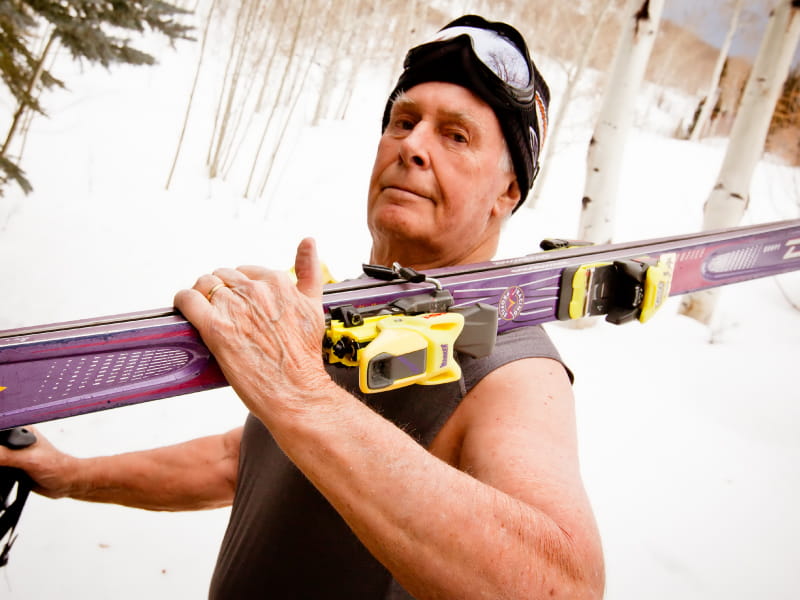It's never too late to reap health rewards of exercise, strength training
By American Heart Association News

As people age, physical activity still needs to be part of the game plan for living a healthy, happy life – and experts say it's never too late to get active and build strength.
"We try to tell people the body can still adapt, and it can still improve," said Barbara Nicklas, a professor of gerontology and geriatric medicine at Wake Forest University School of Medicine.
Those who engage in more occupational or leisure time physical activity have a lower risk of disease and death, and the health benefits of movement can extend to all ages, Nicklas explained in an editorial in the Journal of the American Geriatrics Society.
Nicklas cautions against placing all "older adults" who are age 60 and up into one category. Rather than basing exercise and activity goals on age, they should be geared to one's "physical functional status."
"What can the person do?" she said. "Not everybody is the same."
Whether you're 65 or 85, or a runner, a tennis player or perhaps someone who has difficulty getting around, one constant remains: the importance of moving.
"Any time you can incorporate more movement throughout the day, it is good," said Nicklas, who urges "starting where you're at and doing what you can."
The U.S. Health and Human Services Department and the American Heart Association recommend at least 150 minutes per week of moderate-intensity aerobic activity or 75 minutes of vigorous activity or a combination of both, as well as muscle-strengthening activity.
For those who have been living a sedentary lifestyle, walking is the best way to begin getting physically active, Nicklas said. She suggests going with a friend or enrolling in a walking program like the one her university offers. It adds accountability, a social component and safety, to guard against falls.
Using a "walking tool," such as a cane or walker, if it's needed, can help you stay active, Nicklas said.
"Slow and steady – the tortoise pace – is better than the rabbit pace when you're starting out or starting over," she said.
Resistance or strength training – through free weights, weight machines, pushups or pullups – can help with range of motion around joints and improve muscle mass, muscle strength and bone strength. It can help in the ability to perform everyday activities, improve balance and may reduce the risk of falls.
Fred Bartlit, 87, proves the point that chronological age isn't the determining factor when it comes to strength and feeling young.
A former U.S. Army ranger, Bartlit always had been physically active. He also was an avid skier and golfer. As he reached his 50s, at the urging of his future wife, he intensified his workouts and began strength training at a gym.
Today, the Colorado attorney and author said he is stronger than when he was in the Army at age 22. In addition to practicing law, he makes it his mission to inform older adults about battling sarcopenia, the loss of muscle with aging.
"Our bodies, they're crying out for physical activity," he said. "And now the world is sedentary."
For someone as active as Bartlit, strength training helps him ski challenging mountains trails with his 58-year-old son and 16-year-old granddaughter.
Multiple scientific studies point out that building strength is important in performing everyday activities and in avoiding or managing chronic disease.
Bartlit suggests working with a trainer at first, if possible, and trying to fit in strength training three times per week.
"You have to create habits," said Bartlit, who spreads his message in speeches and online through his StrongPath website. "It's about living a full life. It changes the way you think, the way you feel, your confidence in doing things."
Boosting physical activity and strength helps aging adults do the things they want to do in daily life, and that can be motivating, Nicklas said. It may be as simple as going to the grocery store on your own or having the energy to take grandchildren to the park or to a soccer game.
Older adults are disproportionately affected by conditions such as diabetes, arthritis and heart disease, with 80% of people over 65 having at least one of those chronic conditions, according to the National Council on Aging.
But even though some health setbacks may occur with advancing age, they don't have to completely derail an exercise plan. "This is just reality, and it's going to happen," Nicklas said.
"Steady improvement" should be the aim, she said. "The body is still capable of adapting."
If you have questions or comments about this story, please email [email protected].





